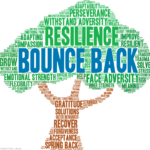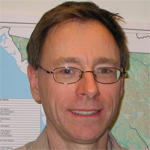 It’s dark. It’s cold. And it’s 5 p.m. here in Iowa. If that sounds rather bleak to you, I wouldn’t blame you. But to Stella, my 12-year-old canine companion, it’s a wonderland. She’s half-Shetland sheepdog and half-American Eskimo, so the colder and snowier it is, the more she feels at home. And although I do grumble putting on heavy layers of clothing and gloves in preparation for an icy walk, I have to say, overall, I’m pretty satisfied and happy. I get to spend quality time with my dog, to exercise my heart and lungs, to wave (and cheerily bark) hello to our friends from across the neighborhood and to meditate on the larger things in the world. And I know that with every passing day, I’ll get closer and closer to warmer and brighter days. So this month, let’s rheuminate on the tenacity of hope.
It’s dark. It’s cold. And it’s 5 p.m. here in Iowa. If that sounds rather bleak to you, I wouldn’t blame you. But to Stella, my 12-year-old canine companion, it’s a wonderland. She’s half-Shetland sheepdog and half-American Eskimo, so the colder and snowier it is, the more she feels at home. And although I do grumble putting on heavy layers of clothing and gloves in preparation for an icy walk, I have to say, overall, I’m pretty satisfied and happy. I get to spend quality time with my dog, to exercise my heart and lungs, to wave (and cheerily bark) hello to our friends from across the neighborhood and to meditate on the larger things in the world. And I know that with every passing day, I’ll get closer and closer to warmer and brighter days. So this month, let’s rheuminate on the tenacity of hope.
1. Finding Hope
How exactly does a rheumatologist find hope in this day and age in which we sometimes feel surrounded by despair? Certainly in our field, we face daily challenges of managing chronic, often debilitating, diseases. Our patients often arrive to us in pain, frustrated and looking for answers that we may not readily have. It’s our duty—and our privilege—to help guide them toward better days, even if better means small increments rather than quantum leaps. In these situations, I find hope by witnessing and participating in the small but significant victories.
During my walks on cold, wintry nights, I think of the patients I saw that day who are also able to walk due to the hard collaborative work among clinicians, patients and supporting staff. With every step, I partake in their joy of fighting disability and incapacity through effective pharmacologic and non-pharmacological therapy.
On larger scales, I find great hope in science. We are blessed to be in a field that, although rooted in the ancient traditions of medicine, constantly expands with new insights. With every new immunomodulator, innovative approach to care and greater unveiling of the mysteries of the immune system, we find a renewed sense of purpose. This progress is a periodic reminder that, although we may not have all the answers for our patients today, we are steadily moving closer to more effective treatments and better quality of life for our patients.
The same can be said of larger societal trends. There is no doubt that the world we live in is fragile and imperfect, but it is so much more imbued with concepts of justice and equity than ever before. We are blessed to live in a time in which people all around the world see themselves as having a mission to create a better world for our descendants. There’s no doubt that our progress is often shaky, with one step backward for every two steps forward, but it is progress that comes from warm hearts and bright minds nevertheless.



